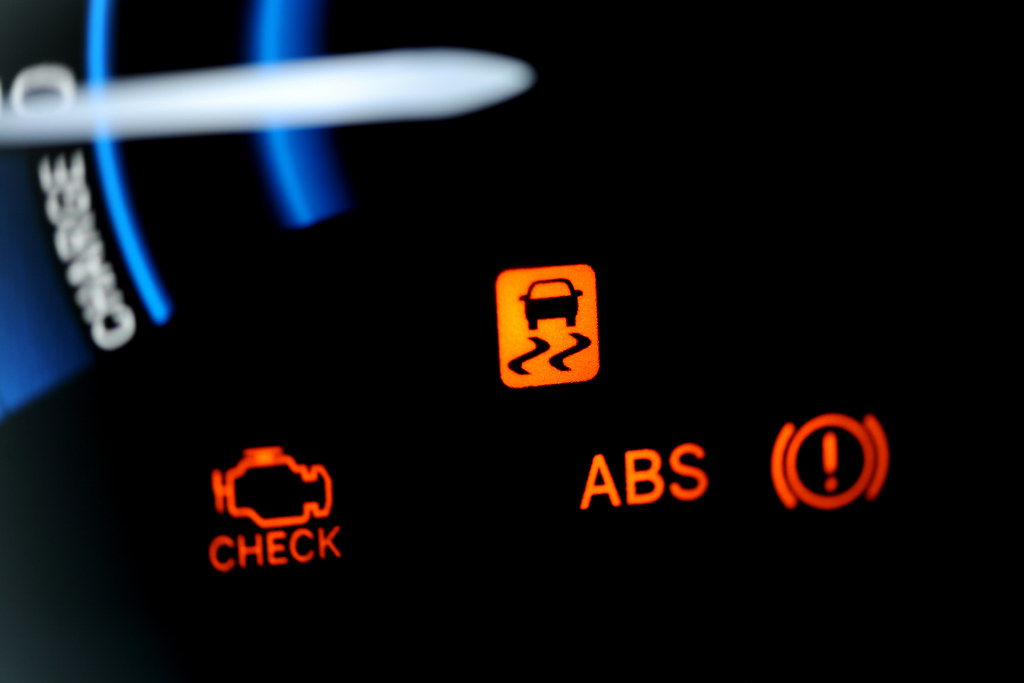Anti-lock braking systems, or ABS for short, is an important safety feature that is fitted as standard across all modern cars and is an effective system when it comes to braking, if used correctly.

So how does it work? When it comes to wet and slippery roads or even during an emergency stop, you may find that your wheels lock up, losing traction and control over the car, causing it to spin.
ABS uses electronics to detect and prevent this, helping the driver to maintain control over the vehicle. The system uses sensors that detect when one wheel is rotating at a different rate to the others. If a wheel is turning more slowly when braking, the sensors will register that, and recognise that this is a sign that the wheel is locking or about to lock. This is then detected by the electronics, that will activate a relief valve, reducing the brake pressure until the wheel is rotating at the same rate as the others. This process can be repeated many times over if the system detects that the wheel is beginning to lock again.
When ABS is active, you should be able to feel the brake pedal judder when braking heavily, this will indicate that the system is active and working correctly. If your vehicle happens to develop a fault and the ABS stops working, you can manually imitate the system by applying the brake and releasing it repeatedly, while it is not as responsive as ABS, it will still help you maintain control of the car.
ABS is designed to help the driver keep control of the vehicle during emergency braking situations, it does not make the vehicle stop more quickly. While it does reduce stopping distances on wet and slippery roads, emergency braking on soft surfaces such an uncompacted snow or even loose gravel, may see an ABS system lengthen this.
While there are different types of anti-lock braking systems, the majority of passenger vehicles are fitted with four-wheel ABS that is designed to maintain steering ability during emergency braking situations. Rear-wheel ABS is typically found on trucks and is designed to prevent the vehicle from skidding sideways by maintaining directional stability. Consulting the vehicle’s manual will provide you with the relevant information about what type of system your vehicle is fitted with.
Do’s & Don’ts of driving with ABS
Do:
• Keep your foot on the brake and maintain a firm pressure, while still steering, to enable ABS to work properly.
• Keep your distance from the vehicle in front and allow for enough time for stopping suddenly; this may need increasing during hazardous driving conditions.
• Practice driving with ABS and becoming familiar with it and the brake pedal judders that are experienced when the system is activated.
• Any additional driving instructions or information on the anti-lock brake system can be found in the owner’s vehicle manual.
Don’t:
• ‘Pump’ the brakes, the system does this automatically and at a much faster rate. allowing for better steering control. In some ABS equipped vehicles, pumping the brakes can actually turn the system on and off.
• Forget to steer - the system itself does not steer, it simply stops the wheels from locking, allowing the driver to maintain control over the steering and operate the vehicle more effectively.
• Be alarmed by any brake pedal vibrations or mechanical noises while applying ABS – this is normal and lets the driver know that the system is working.
While anti-lock braking systems have been a mandatory safety feature in vehicles since 2004, few drivers actually know what it does or how to use it effectively. Do you know how to use ABS correctly? Or if you’ve put these tips to use, let us know through our social media channels!
Other CarCliq articles that might interest you:
Driving Safely In Windy Weather
For more CarCliq Guides, click here.